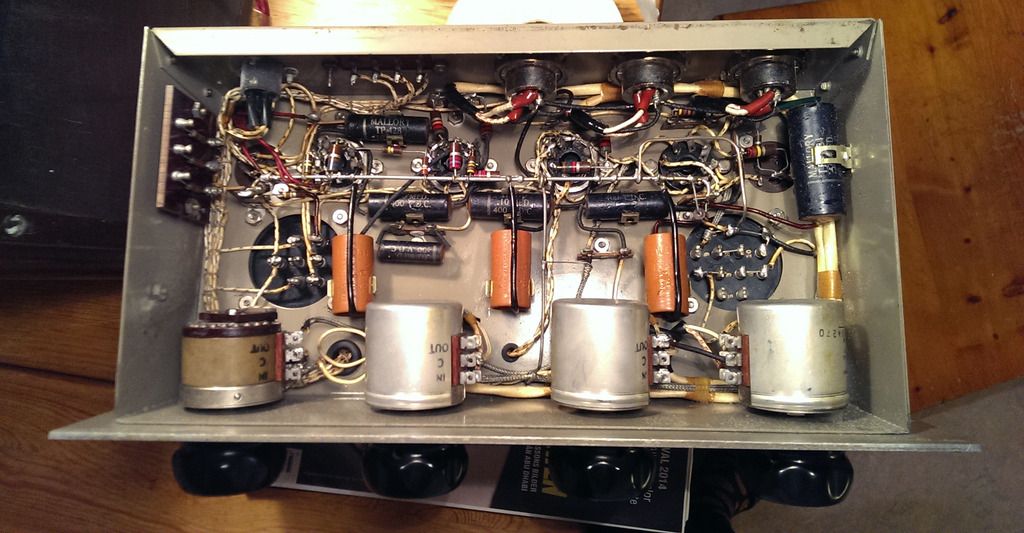Conviction
Well-known member
Hi everyone,
I've had this Raytheon RR30 preamplifier for a couple of years now and finally decided to do a fresh rebuild. I've been keeping it original (except for the electrolytics), but it's always been acting weird with random interference issues, noises, sudden hum tendencies etc. Might be all those carbon comps acting up.
I've never really used it for recording, which of course is a shame. So it's about time.
Attached is the schematic to which I've added the component values. Originally, the schematic had component numbers and a component list. Pretty impractical, plus I'm not sure it's correct.
I would really appreciate if someone would care to take a look at the schematic. At the moment, the output stage hums rather loudly, which lead me to believe I've made an error. Thing is I can't find it.
I've only used metal film resistors, fresh electrolytics and nos Dubilier paper coupling capacitors (.1's and the .022 @400VDC).
I'm not using its original power supply (110V), but a recently overhauled lab supply, confirmed to be free from issues.
DC heaters.
Best,
Olle
I've had this Raytheon RR30 preamplifier for a couple of years now and finally decided to do a fresh rebuild. I've been keeping it original (except for the electrolytics), but it's always been acting weird with random interference issues, noises, sudden hum tendencies etc. Might be all those carbon comps acting up.
I've never really used it for recording, which of course is a shame. So it's about time.
Attached is the schematic to which I've added the component values. Originally, the schematic had component numbers and a component list. Pretty impractical, plus I'm not sure it's correct.
I would really appreciate if someone would care to take a look at the schematic. At the moment, the output stage hums rather loudly, which lead me to believe I've made an error. Thing is I can't find it.
I've only used metal film resistors, fresh electrolytics and nos Dubilier paper coupling capacitors (.1's and the .022 @400VDC).
I'm not using its original power supply (110V), but a recently overhauled lab supply, confirmed to be free from issues.
DC heaters.
Best,
Olle




